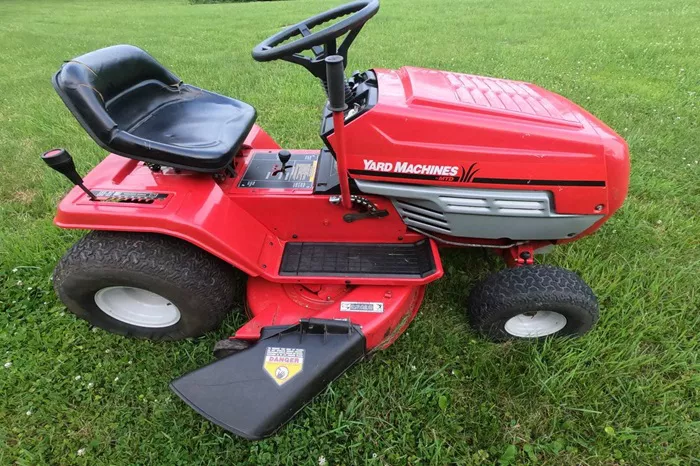When looking back at the evolution of American-made lawn mowers, one brand that often comes up is Yard Pro. Known for its rugged performance and reliable engineering, Yard Pro lawn mowers—especially the lawn and garden tractors—were once a staple in many households with medium to large lawns. If you’re searching for who made them, whether you’re a collector, enthusiast, or someone maintaining a Yard Pro model, this article will answer your questions in simple terms.
We’ll also take a look at Yard Pro’s origins, model features, reviews, and where you can still find information or parts today. As someone who’s traveled and tested tools across various climates and terrains, I can tell you—there’s a reason why people still talk about these machines.
Manufacturer Overview
Yard Pro lawn mowers were manufactured by American Yard Products (AYP). AYP was a division of the Swedish multinational Electrolux, a company known for producing household and professional-grade appliances.
AYP was behind the production of several well-known outdoor power equipment brands. The company produced mowers and tractors for brands like Poulan, Poulan Pro, Craftsman, and of course, Yard Pro. Over time, many of these brands, including Yard Pro, became part of Husqvarna, which was spun off as an independent entity from Electrolux in 2006.
So, in short, Yard Pro mowers were made by AYP, which later became part of Husqvarna.
Brand History
Yard Pro’s legacy is closely linked with the changing landscape of outdoor power equipment manufacturing in the U.S. Here’s how it played out:
Formation of AYP
Electrolux, a Swedish company, acquired Roper Corporation, a major manufacturer of lawn and garden tractors.
Electrolux then consolidated its outdoor brands (Husqvarna, Poulan/Weedeater, and Roper) into a new entity called American Yard Products (AYP).
AYP became one of the largest manufacturers of walk-behind and riding mowers in North America.
Yard Pro’s Time in the Spotlight
The Yard Pro brand came to prominence in the early to mid-1990s.
It was marketed primarily as a value-priced lawn tractor with durable features and reliable engines, often using Briggs & Stratton or Kohler motors.
As AYP began focusing more on Husqvarna, the Yard Pro name eventually faded, with most models absorbed into the Husqvarna product lineup.
Product Range
Though the brand is no longer in production, Yard Pro once offered a solid lineup of:
Lawn Tractors: Designed for residential lawn care, typically with cutting decks ranging from 38” to 46”.
Garden Tractors: Heavier-duty versions capable of pulling accessories like aerators and small trailers.
Push Mowers: Less common but available through smaller retail channels.
Popular Models (Historical)
Yard Pro 46” Lawn Tractor: One of the better-known models, powered by a Briggs & Stratton engine and featuring a hydrostatic transmission.
Yard Pro 42” Garden Tractor: Known for a more powerful frame and multi-speed gear control, ideal for moderate yard work.
Key Features
Despite being considered mid-range in price, Yard Pro mowers had features that made them stand out in their time.
Engine Power
Most tractors used Briggs & Stratton or Kohler Command engines.
Engine sizes ranged from 14 HP to 20 HP, depending on the model.
Cutting Width
Common deck sizes included 38”, 42”, and 46”.
These sizes made them ideal for yards ranging from ¼ acre to over an acre.
Transmission
Older models came with manual gear shift systems.
Later versions offered hydrostatic transmissions for smoother speed control.
Ergonomic Design
Comfort seats, step-through frames, and easy-access controls were key highlights.
Many users appreciated the tight turning radius, which made it easier to maneuver around garden beds and trees.
Customer Reviews & Ratings
Though user reviews from the 90s are hard to come by online, many owners still post in forums and vintage mower communities. Here’s what they say:
Durability
Yard Pro mowers were described as “tough workhorses” that lasted 15+ years with basic care.
Their steel decks were less prone to rust compared to some cheaper modern models.
Ease of Use
Users liked the straightforward controls, especially on manual transmission versions.
The seat comfort and mowing visibility received frequent praise.
Maintenance
Because they used common engines and parts, maintenance was affordable and accessible.
Blades, belts, and filters could often be swapped with Husqvarna or Craftsman parts.
Where to Buy
While Yard Pro is no longer in production, you can still find:
- Used Yard Pro Mowers
- Facebook Marketplace
- Craigslist
- Local equipment auctions
- Small engine repair shops (often resell refurbished models)
Replacement Parts
Since Yard Pro shares parts with Craftsman, Husqvarna, and Poulan:
- Jack’s Small Engines
- Husqvarna dealers
- Amazon and eBay
Historical Specifications
For detailed specs and manuals, TractorData is the most reliable source. Just search for “Yard Pro” under brands, and you’ll find engine details, production years, and deck specs.
Conclusion
Yard Pro lawn mowers may not be rolling off the production line anymore, but their legacy lives on. Manufactured by American Yard Products, a key player in U.S. outdoor tools, Yard Pro mowers provided a great mix of performance, reliability, and affordability. They remain a favorite for homeowners and collectors who appreciate well-built machines.
Whether you’re restoring an old unit or researching for parts, TractorData and secondhand markets remain the best places to go. And while today’s electric or low-emission mowers dominate the conversation, there’s something special about those early 90s gas-powered legends.
If your journey takes you through rural towns, local farm auctions, or even community tool sheds, don’t be surprised if you still see a Yard Pro doing its job like the day it was bought.
For those who love the story behind their tools as much as the results they produce, Yard Pro is more than a brand—it’s a piece of Americana.
Related topics:
- How Much to Get Lawn Mower Blades Sharpened
- 3 Best Lawn Mowers for a Small Garden
- Where to Buy Cub Cadet Lawn Mowers: A Complete Guide

